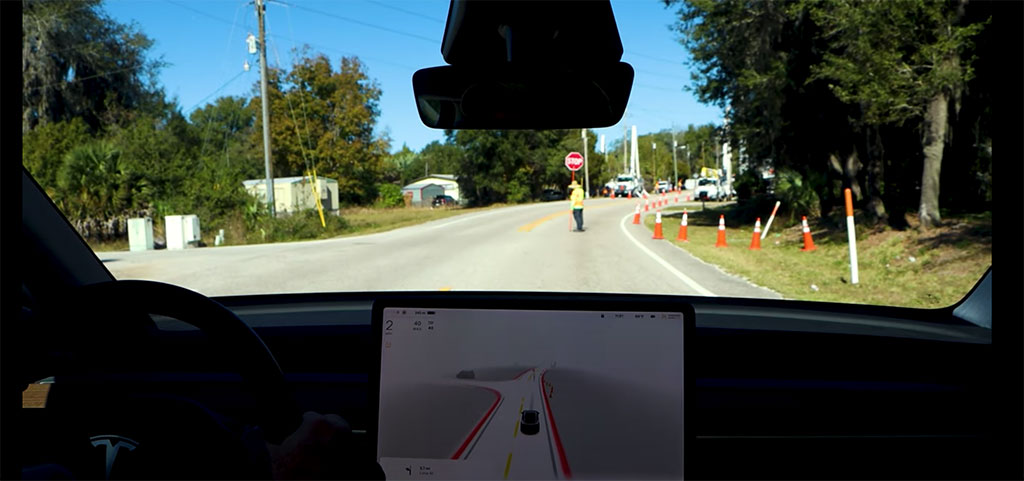I was reading an article in Scientific American, found by one of my students, and I came across this passage:
“A Tesla on autopilot recently drove directly toward a human worker carrying a stop sign in the middle of the road, slowing down only when the human driver intervened. The system could recognize humans on their own (which is how they appeared in the training data) and stop signs in their usual locations (as they appeared in the training images) but failed to slow down when confronted by the unfamiliar combination of the two, which put the stop sign in a new and unusual position.”
—Artificial General Intelligence Is Not as Imminent as You Might Think, July 1, 2022 (boldface mine)
The article helpfully linked to a YouTube video, in which we see and hear the situation. The driver is narrating as the car makes its decisions: “All right, we’re having to take over. It’s not slowing early enough. [Pause.] Yep, the car keeps trying to go each time … That’s really unfortunate. It sees the person, it sees the stop sign, but it’s almost not taking it seriously.”

This is not a big surprise if you understand the nature of training data and the long tail — a person walking across a street is common enough, and a stop sign is very common, but a person holding a stop sign and standing (not walking) in the middle of the lane occurs much less frequently than the other two. It’s not rare, but it’s not something we encounter every day while driving.
Here’s the thing: Later in the article, the author says: “You can’t deal with a person carrying a stop sign if you don’t really understand what a stop sign even is.” And at first, I’m like: Cool, cool. That’s good, that’s a nice observation.
And then I thought: Wait a minute. Wait just a minute. Of course an AI system understands nothing, nothing at all. It has been trained to recognize a stop sign. It has been trained to recognize a human (especially a human in the road). But what is really happening in the video? The car is stopping, briefly, and then starting up again. It does this more than once. The driver has to intervene, put a foot on the brake, to stop the car from going forward and hitting the person. The car is behaving the way it was programmed to behave at a stop sign — and not the way it was programmed to behave if a human is walking in front of the car.
The central point here is not that the car’s system doesn’t know what a stop sign is (which, it’s true, it doesn’t). The central point is that given a human holding a stop sign, the system behavior governing a regular, side-of-the-road stop sign has dominated, has come to the fore as the default behavior — and the system behavior that prevents a human from being run over is not in play.
This is no trolley problem. The car’s AI did not decide to kill the human. It did not weigh the options. In an unlikely case (an edge case), it defaulted to the common, everyday case: There is a stop sign. This is what I do when there is a stop sign.
I’m blogging this because this is great discussion material for students and others!

AI in Media and Society by Mindy McAdams is licensed under a Creative Commons Attribution-NonCommercial-NoDerivatives 4.0 International License.
Include the author’s name (Mindy McAdams) and a link to the original post in any reuse of this content.
.
